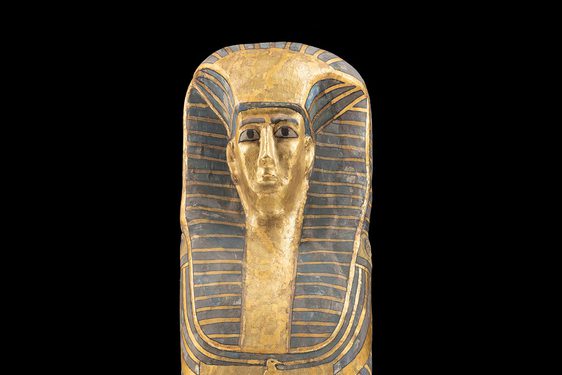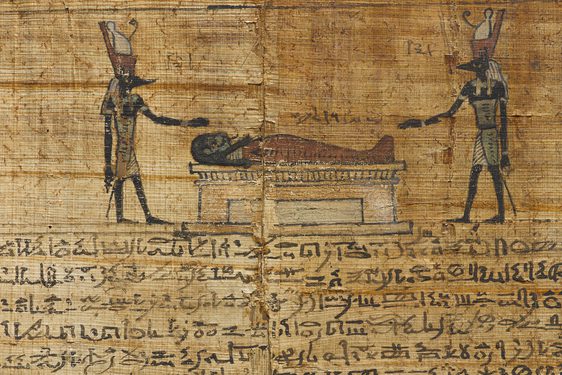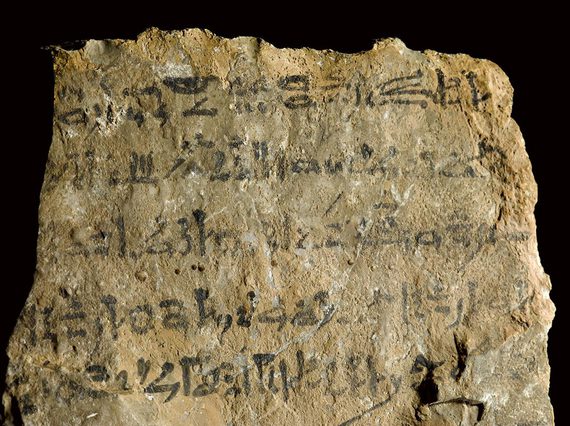
Ancient Egyptian tomb warnings, curses, and ghosts
News Story
It is a popular misconception that ancient Egyptian tombs all contain curses. The idea of a ‘mummy’s curse’ developed in 19th century fiction but became widespread due to the sensationalist journalism that followed the discovery of the tomb of King Tutankhamun in 1922.
The death of Lord Carnarvon in the months after the opening of the tomb of King Tutankhamun fit well with the idea of a long dead pharaoh wishing for retribution. It of course also produced great headlines for newspapers that did not have access to the tomb due to Carnarvon’s exclusive deal with The Times.
The famous Edinburgh-born writer Sir Arthur Conan Doyle, the creator of Sherlock Holmes, amplified this further by suggesting that an 'evil elemental' from the tomb was to blame for Carnarvon’s death, rather than blood poisoning and pneumonia. In 1892 Doyle had published a short story called 'Lot no. 249', which utilised the bandaged menace of a reanimated mummy as the protagonist, a representation which profoundly influenced horror films throughout the 20th century and beyond. While this superstition has endured, the reality of how the ancient Egyptians viewed their tombs, and the afterlife was actually very different.

Panorama of the necropolis of Sheikh Abd el-Qurna, Egypt.
Egyptian afterlife
Early scholars often interpreted ancient beliefs as reflections of their own religion. This led to common misunderstandings about post-mortem judgements, a paradise-style afterlife, and even ideas about vengeful spirits. We are still learning about Egyptian beliefs about what happened to someone after death.
It is at least clear that Egyptian understandings of the afterlife were complex, with different elements used to explain aspects of a place that no one returned from to tell anyone about. The individual was thought to be made up of several parts including the body, the shadow, and the name. After death, their life force (ka) was associated with the tomb, where it needed to receive food offerings to survive. Another part of the person, the mobile part of their spirit known as the ba (represented as a human-headed bird) was thought to fly about during the day but also needed to return to the tomb for the night.
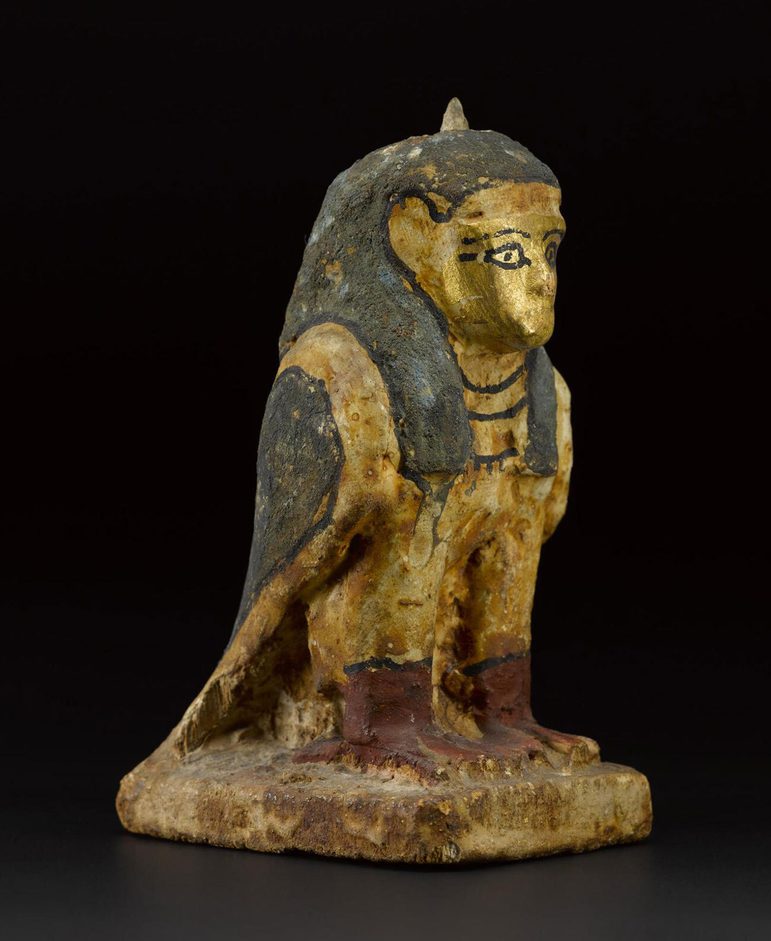
Painted wooden statuette of a ba-bird, depicted with the body of a falcon and a human head, Egypt, c.747-525 BC. Museum reference A.1891.107.
Building a tomb was a massive investment in time, wealth, and effort. Those who could afford to plan for their death began to put those plans into action as soon as possible.
Tombs had two distinct parts; the chapel and the burial chamber. The chapel was a public area that provided a focus for the family of the deceased, who visited during festivals to provide offerings for their relatives, similar to the way in which we might visit a cemetery on the anniversary of a loved one’s death. The burial chamber was sealed after the funeral.
A Ghost Story
As Egypt’s fortunes rose and fell, tombs would be forgotten and buried or reused and repurposed. Through archaeological excavations we can understand some of these processes which were explored in our 2017 exhibition The Tomb about the Rhind Tomb.
Ancient texts also help us to explore Egyptian attitudes towards tomb building and reuse. One famous example is known amongst Egyptologists simply as 'A Ghost Story'. In the story a High Priest called Khonsuemhab meets an unhappy spirit called Niutbusemekh, who complains that despite his illustrious life serving the King, his tomb has been destroyed. He asks for Khonsuemhab’s help to build a new one. The High Priest agrees and sets out to find a site; sadly, the end of the story is not preserved so we don’t get to hear whether Niutbusemekh was provided with a new home for eternity or not.
Tomb warnings
Actual written examples of tomb curses from ancient Egypt are quite rare. Those that survive generally follow an almost legal structure; that if you do something negative you will be punished. I would be more inclined to call them warnings – you wouldn’t call a modern 'No Trespassing' sign a curse.
One particularly fun example of a warning from the tomb of Penniut at Aniba warns that any negative behaviour will result in the individuals simply being 'miserable', others suggest that the transgressor will not achieve their desired afterlife, or simply warn that one bad turn results in another. This type of warning can be found throughout Egyptian legal texts, where bad behaviour is equalled with punishment, for example as an oath: 'If I dispute this matter again, I will receive 100 lashes'; or in a will: 'the children who have given me nothing, I will not give them any of my property'.
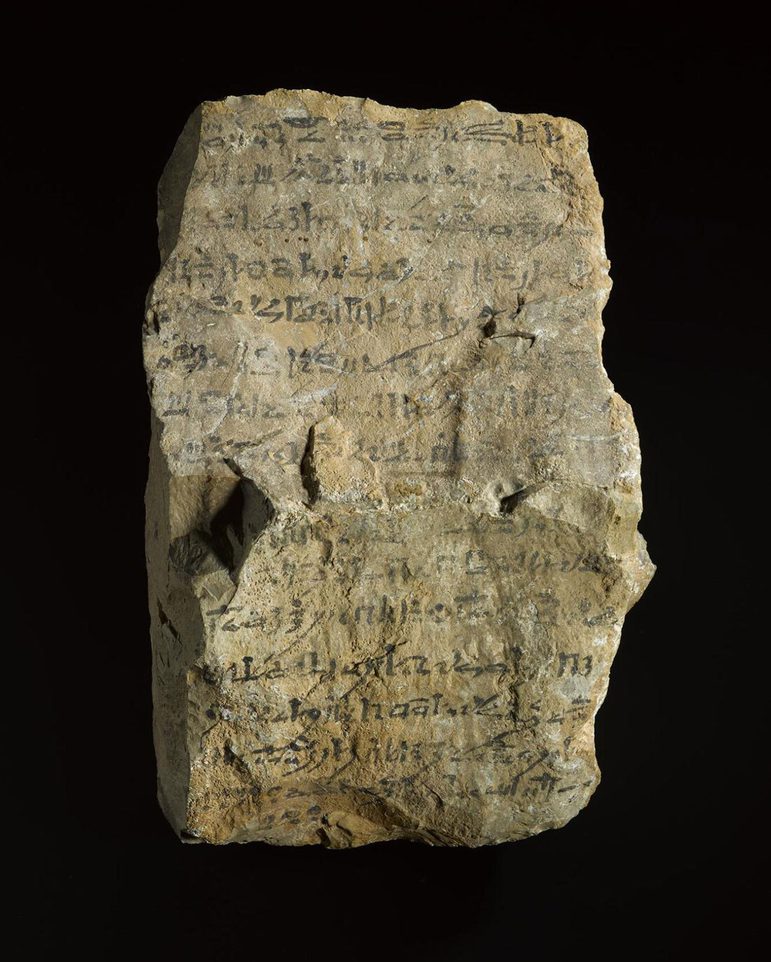
A stone inscribed with a tomb warning written in hieratic script with black ink, Sheikh Abd el-Qurna, Egypt, c.1295-1069 BC. Museum reference A.1956.316
Within the collections of National Museums Scotland there is an inscription on a piece of limestone which provides another insight into the ancient Egyptian desire for the tomb to survive intact. The stone, which is around the size of a few bricks, was covered with a light wash to provide a clean surface for the inscription. It was probably placed outside the tomb entrance, possibly on a low wall so that visitors could read it before entering.
Dated to between approximately 1295-1069 BC, the fifteen lines of the inscription implore visitors to the tomb placed to behave correctly, in a similar way to traditional inscriptions which ask for visitors to give offerings. The inscription is written in a script called hieratic, which was a shorthand form of Egyptian writing. To share this with you I have translated it below.
It opens:
'It is to you that I speak; all people who will find this tomb passage!'
The visitors are then warned:
'Watch out not to take (even) a pebble from within it outside. If you find this stone you should <not> transgress against it.'
They are also reminded of the power of the deceased, who are referred to as gods:
'Indeed, the gods since (the time of) Pre, those who rest in [the midst] of the mountains gain strength every day (even though) their pebbles are dragged away.'
The reader is encouraged to find their own space to build their tomb and not encroach upon others’:
'Look for a place worthy of yourselves and rest in it, and do not constrict gods in their own houses, as every man is happy in his place and every man is glad in his house.'
The inscription ends with a final warning on behalf of the deified dead, written emphatically:
'As for he who will be sound, beware of forcefully removing this stone from its place.
As for he who covers it in its place, great lords of the west will reproach him very very very very very very very very much'
There are no threats of death or of spiritual vengeance; instead, we see a well-written appeal towards good behaviour which would help protect the tomb and honour the memory of the deceased. Though perhaps the 'Mummy’s Gentle Reproach' isn’t quite as snappy or headline grabbing.
Some further reading: Luckhurst, R. (2012), The Mummy’s Curse: The True History of a Dark Fantasy, Oxford.
Written by

Dr Daniel Potter
Assistant Curator, Ancient Mediterranean and Africa
